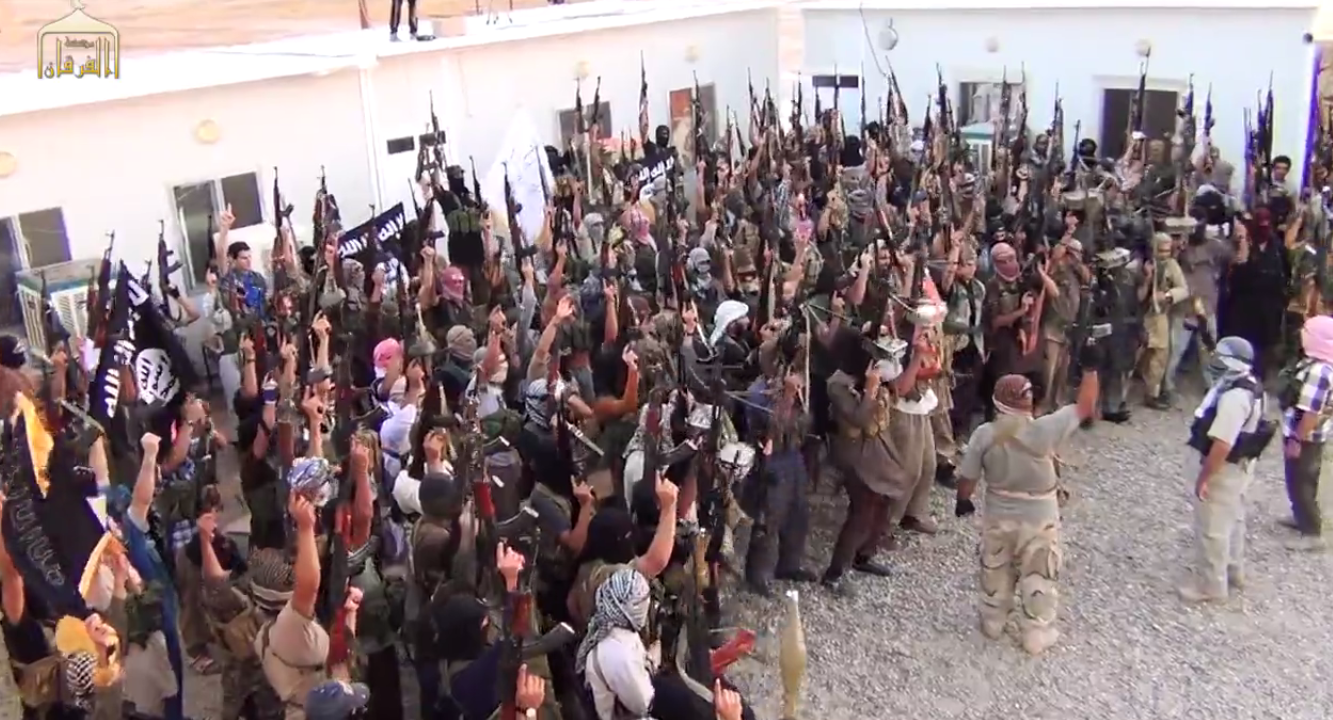Robert Beckhusen
Aug 8, 2014
American warplanes now are bombing the Islamic State of Iraq and Syria militant group. No, those planes are probably not going to liberate northern Iraq from the extremist group nor end the war. But ISIS’s tactical advantages represent a weakness against modern air power.
ISIS fights semi-conventionally. This means they’re able to maneuver on an open battlefield using standard military tactics. That’s different from an insurgency, which blends into the civilian population and avoids direct confrontation with a regular military force. ISIS is a hybrid—able to both openly fight and melt away.
ISIS also possesses heavy military hardware including tanks, Type 59–1 field guns and American-made M198 howitzers it captured from the Iraqi army. Shockingly, one Kurdish official told CNN that ISIS has even attacked with an M-1 Abrams tank the militants also seized from Baghdad’s retreating troops.
We haven’t confirmed the tank report. Still, ISIS’s hardware allows the group to hit Iraqi army and Kurdish Peshmerga troops from beyond the defenders’ line of sight.
 “Given the rapidness in which it is able to maneuver, given its ability to direct indirect fire attacks followed by direct assaults with heavy weapons, it is a militarily proficient organization,” a senior White House official said of ISIS in a conference call on Aug. 7.
“Given the rapidness in which it is able to maneuver, given its ability to direct indirect fire attacks followed by direct assaults with heavy weapons, it is a militarily proficient organization,” a senior White House official said of ISIS in a conference call on Aug. 7.
ISIS fighters in Iraq in mid-2014. ISIS propaganda video capture
It was ISIS’s skill at the former that lead to the current conflagration. On Aug. 2, the militant group launched an attack across several hundred milesagainst Kurdish positions holding the line in Iraq’s north.
Tens of thousands of people from the minority Yazidi religious group were caught in the gap between the advancing ISIS fighters and the retreating Kurds. Fearing a genocide, thousands fled up Mount Sinjar without food or water.
“[ISIS] is so ruthless—quite literally putting people’s heads on spikes as a sign of anyone—the fate of anyone that would resist them,” the administration official said. “In the case of the Yazidis, they were very clear that they were there to enslave the women and to kill all the men in these towns.”
America’s new war in Iraq is a lot different than the aborted plan to strike Syria.
Pres. Barack Obama came close to authorizing air strikes against Syrian dictator Bashar Al Assad’s forces last year. But this would have involved a major air campaign beginning with the destruction of Assad’s air defense network.
That attack plan risked dragging the U.S. into an open-ended conflict that likely would have not ended with Al Assad leaving power. For similar reasons, Obama has not jumped to defend Iraq’s sectarian prime minister Nouri Al Maliki.
 “Intervening on behalf of the Kurds, who are long-standing U.S. partners, is very different from intervening to support the Iraqi government and Prime Minister Nouri Al Maliki, who is rightly seen as a divisive leader who has fanned Iraq’s sectarian flames,” wrote Nora Benahel of the Center for a New American Security.
“Intervening on behalf of the Kurds, who are long-standing U.S. partners, is very different from intervening to support the Iraqi government and Prime Minister Nouri Al Maliki, who is rightly seen as a divisive leader who has fanned Iraq’s sectarian flames,” wrote Nora Benahel of the Center for a New American Security.
U.S. F/A-18 fighters aboard USS George H.W. Bush on Aug. 7, 2014. Navy photo
The U.S. has several advantages in northern Iraq that it wouldn’t have had in Syria.
More than 700 U.S. commandos have worked behind the scenes in the country since June, advising Iraqi troops. Drones and fighter aircraftequipped with sensor pods flew top cover. The advisers and air crews handle the daily work of coordinating local Iraqi troops and drawing up target lists.
America has no such presence in Syria.
In addition to the USS George H.W. Bush carrier group in the Persian Gulf with its four squadrons of F/A-18 fighters, Washington has the option of launching aircraft from Jordan, Turkey and Qatar.
Two of the carrier-based fighters dropped 500-pound bombs on ISIS’ artillery on Aug. 8. We expect the carrier-based fighters will carry out most of the strikes, at least initially.
Here’s the problem for ISIS. Since ISIS fighters operate semi-conventionally, they are easy pickings for these warplanes. It’s easier to hit vehicles and fixed artillery sites from the air than it is to strike individual insurgent fighters.
https://medium.com/war-is-boring/what-makes-isis-deadly-also-makes-it-vulnerable-to-air-power-28ae7312603d
It’s possible ISIS has limited anti-aircraft weapons, including shoulder-fired Stingers it took from the Iraqis. Indeed, the loss or capture of a U.S. pilot is a terrifying prospect for the White House.
But the bulk of ISIS’s anti-aircraft weapons are DShK and ZU-23–2 heavy machine guns that the terror group has used with brutal effectiveness against Iraq’s dwindling helicopter gunship force—but which don’t stand much of a chance against fast, high-flying fighter planes.
Air power has its uses, but also its limitations. The open-ended question is whether local troops will be able to physically eject ISIS from its territory. Air power can help keep ISIS from advancing into Kurdistan. But to defeat the group and recapture territory, the Iraqis and Kurds will have to attack on the ground.
No comments:
Post a Comment